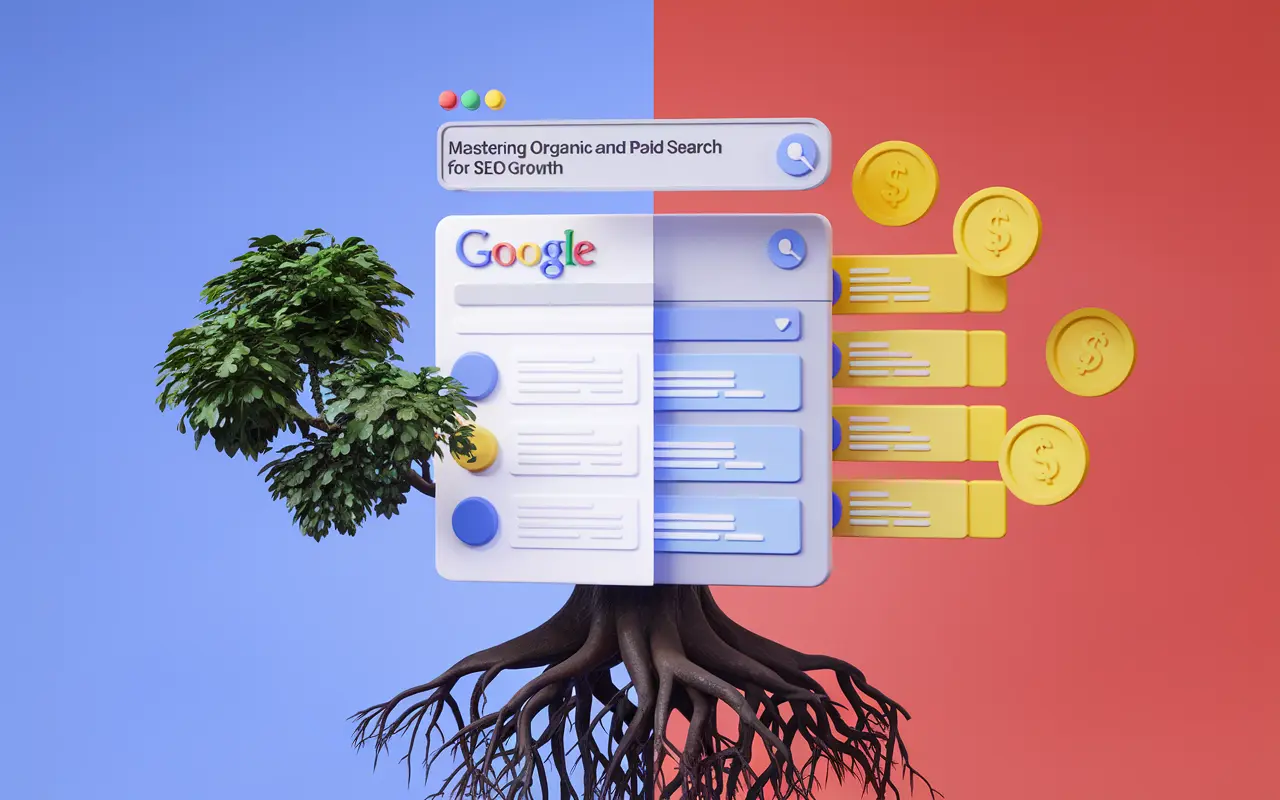What Is the Difference Between Organic and Paid Search?
Understanding the difference between organic and paid search is crucial in building an effective digital marketing strategy. Organic search refers to unpaid search engine results that appear due to their relevance to the search term and SEO optimization, while paid search involves advertisers paying search engines to display their content at the top of search results for specific queries.
For any business leveraging SEO services, recognizing the distinction helps allocate budget and time efficiently. Organic search focuses on long-term sustainability and authority, whereas paid search delivers fast results with adjustable targeting options. A harmonized approach combining both can supercharge online visibility, lead generation, and conversion rates.
Key Takeaway
Organic search fuels long-term brand visibility through SEO, while paid search delivers immediate traffic via targeted ads—understanding both is vital for a balanced, high-ROI digital strategy.
Why Knowing the Difference Between Organic and Paid Search Matters for SEO Strategy
Each type of search plays a distinctive role in an SEO strategy. Integrating both strategically can help businesses scale cost-effectively and achieve specific goals such as increased visibility, targeted lead generation, or localized growth.
Organic Search Builds Credibility Over Time
With ongoing optimizations like keyword targeting, content creation, and backlink development, organic search builds authority on search engines—leading to higher rankings and consistent traffic without continuous ad spend.
Paid Search Offers Speed and Precision
Paid search, via platforms like Google Ads, allows businesses to target specific demographics, regions, or behaviors instantly. It helps gain visibility in competitive markets and can be tested and scaled quickly.
Best Practices: Organic vs Paid Search Optimization
- Conduct Comprehensive Keyword Research: Choose organic keywords for informational content and transactional keywords for paid campaigns.
- Optimize Landing Pages: Ensure landing pages load fast, are mobile-friendly, and contain relevant keywords for both SEO and ad quality score.
- Align Campaign Goals: Use organic search for long-term traffic growth and paid search for immediate visibility or seasonal campaigns.
- Track & Analyze: Use tools like Google Analytics and Google Search Console to track organic traffic, and complement with Google Ads data.
- Leverage A/B Testing in Paid Campaigns: Regularly test headlines, creatives, CTAs to find the most cost-effective ad performance.
How Organic and Paid Search Work in the SEO Process
Organic Search in Action
Search engines like Google crawl, index, and rank web pages based on over 200 factors such as mobile usability, keyword density, domain authority, content relevance, and user engagement. SEO aims to improve these factors to earn unpaid traffic over the long term.
Paid Search Functionality
Paid ads are placed based on bidding in ad auctions where factors like max bid, ad relevance, and landing page experience define placement. Your ad budget, bidding strategy, and targeting setup play critical roles in visibility and cost-effectiveness.
| Aspect | Organic Search | Paid Search |
|---|---|---|
| Cost | Free (requires time & effort) | Pay-per-click (PPC) |
| Time to Results | Long-term | Immediate |
| Click-Through Rate (CTR) | Higher in many sectors | Lower than organic on average |
| Trust Factor | Generally higher | Users recognize ads |
| Maintenance | Ongoing SEO optimization | Constant investment required |
Case Study: Combining Organic and Paid Search for Maximum ROI
The Challenge: Low Website Visibility After Website Redesign
A local e-commerce brand noticed a 60% drop in organic traffic after a site redesign. They relied solely on organic SEO and had no history of running paid campaigns.
The Strategy: Integrated Organic SEO + Targeted Paid Ads
We optimized title tags, structured data, and internal links to recover rankings. Simultaneously, we launched Google Ads for high-converting keywords to maintain traffic flow during the SEO rebuild.
The Outcome: 3X Traffic Growth and Higher ROI
In 3 months, the brand regained 80% of their organic traffic and increased total visitors by 210%. Paid campaigns had a 4.2x ROAS, while organic sessions contributed to lower bounce rates.
Common Mistakes to Avoid
- Relying Only on One Channel: Exclusively using organic or paid search caps potential growth.
- Misaligned Messaging: Inconsistent headlines or keywords between ads and landing pages lower conversion and ad quality score.
- Ignoring Analytics: Not tracking performance metrics makes it difficult to refine strategies or justify ROI.
- Overlapping Keyword Cannibalization: Competing for the same keywords in both organic and paid can lead to inefficiency.
Related Terms
- SEO Audit: A comprehensive evaluation of your website’s SEO health involving both organic and paid recommendations.
- On-Page SEO: Activities performed directly on your site to boost organic rankings, aiding visibility in non-paid results.
- PPC: A paid advertising model where advertisers pay when a user clicks their ad, closely related to paid search campaigns.
FAQs About Organic and Paid Search
Both have distinct advantages. Paid search offers immediate visibility, while organic search builds long-term trust and authority. A combined approach is typically more effective.
On average, it can take 3–6 months to see meaningful organic SEO results, depending on the competition, content quality, and website health.
Paid search does not directly affect organic rankings, but increased traffic and visibility can enhance brand awareness, which may lead to higher organic engagement.
Users often trust non-paid results more than ads, especially if the brand ranks high organically, leading to higher CTRs for organic listings.
Google Ads is the most popular platform for paid search, along with Microsoft Advertising (Bing), Facebook Ads, and LinkedIn Ads for specific targeting.
Conclusion
Mastering the difference between organic and paid search enables businesses to craft a robust digital strategy. Whether you’re aiming for sustained visibility or immediate lead generation, leveraging both search methods amplifies your brand’s online presence. Explore more SEO strategies to boost your growth.






